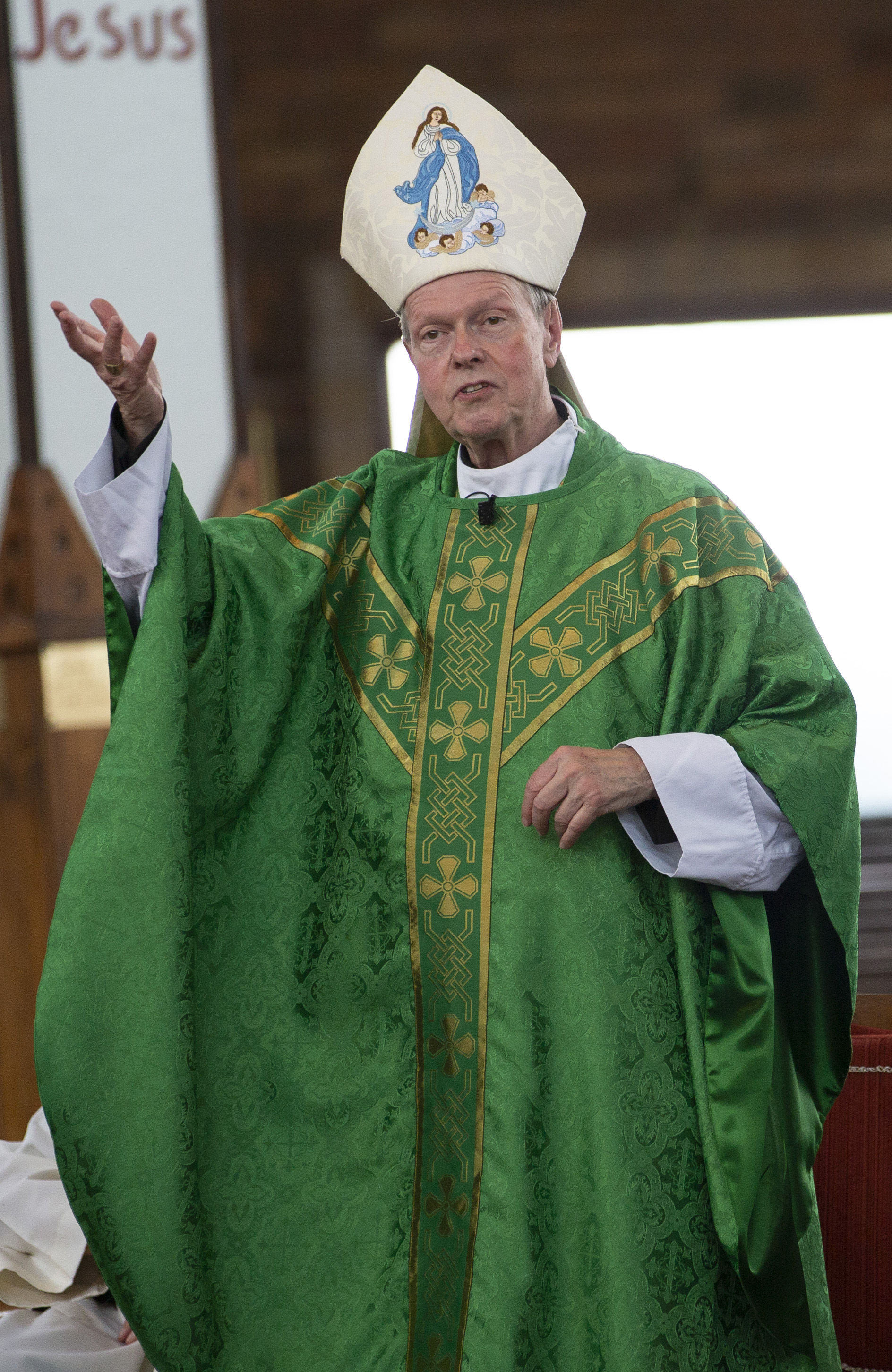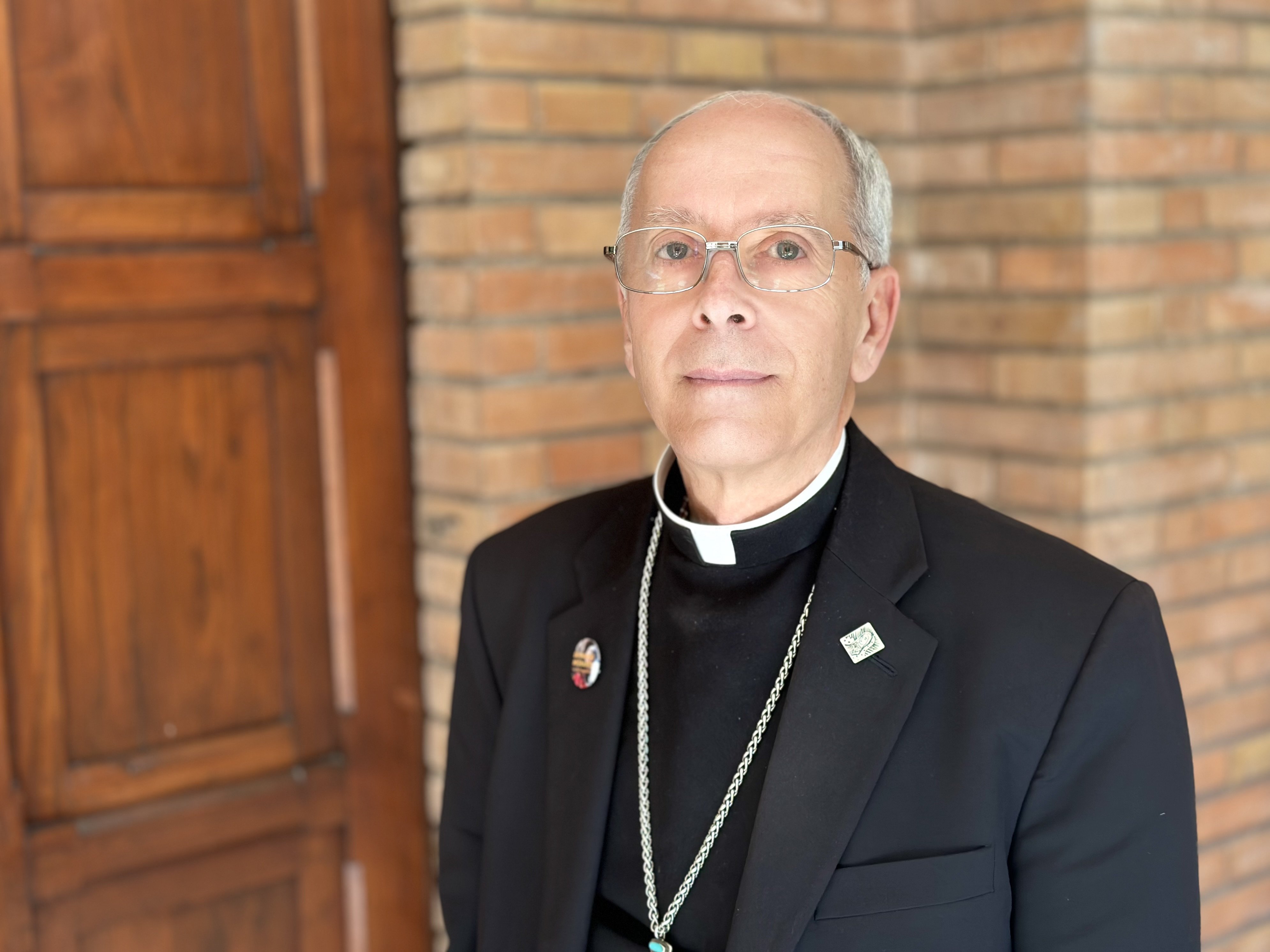April 6, 2018 at 1:53 p.m.
SEMINARIAN'S DIARY
The beauty of the new Roman Missal
Here at Mundelein Seminary in Chicago, we prepared for the new translation of the Roman Missal for what has seemed like years. A number of our professors were involved in the preparation of men and women throughout the U.S. and Canada who would later be responsible for training priests and laity in their own dioceses.
Bishops, priests, deacons, religious men and women and laity worked together to translate, construct and implement the magnificent prayers we now use.
Here is what I've noticed so far: First, the prayers of the new translation are more universal.
Each of the many prayers we say at Mass were composed in Latin, the Church's official language. In the wake of Vatican II in the 1960s, the Roman Missal was translated into the vernacular for the first time in the Church's history.
But the English translation had notable problems. Despite two revisions, many still felt it failed to capture the essence of the Latin text: For example, in Latin, the greeting reads, "Et cum spiritu tuo," which literally means, "And with your spirit." Before the translation, we said, "And also with you."
Not only was that not faithful to the Latin, it was not identical with the way the rest of the Church was praying. The greeting in Spanish is, "Y con tu Espiritu," and in Italian, "E con il tuo spirito" - both of which are translated as, "And with your spirit."
Secondly, the language of the new missal is objectively beautiful and theologically rich. This is the result of a translation that not only is faithful to the Latin, but takes into consideration the text's theological and ritual components.
The prayers are structured in a way that reflects both the great mysteries of our faith and God's Word in the Old and New Testament. They articulate the mission of the Church using beautiful and poetic prose.
Beauty of language should be present in the language of the Church. There is no better place for it to be expressed than at the holy celebration of the Eucharist and the sacraments.
At Mass, the words we use encapsulate our deepest sense of adoration and gratitude. This is especially noticeable in the collect (the opening prayer), the prayer over the offerings and the prayer after communion.
For the Fourth Sunday of Ordinary Time, the former prayer over the offerings in the old translation reads, "Lord, be pleased with the gifts we bring to your altar, and make them the sacrament of our salvation. We ask this through Christ our Lord."
The new translation reads, "O Lord, we bring to your altar these offerings of our service: Be pleased to receive them, we pray, and transform them into the sacrament of our redemption, through Christ our Lord." This says the same thing in a more poetic and sacred manner.
The prayers of the Church's liturgy are a dialogue with God. Even where there is a dialogue between the priest and people, the liturgy is essentially a dialogue of love between God and His people. The quality of language we use certainly reflects this sublime reality.
I am especially happy that the text of the new translation is scripturally more accurate. One of the most notable references to Scripture in the new missal is found in the communion rite: We say, "Lord, I am not worthy that you should enter under my roof, but only say the word and my soul shall be healed."
This is a faithful translation from the eighth chapter of the Gospel of Matthew, the recorded words spoken by the centurion who astonished Christ with the depth of his faith. Jesus responds to the centurion, "I tell you solemnly, nowhere in Israel have I found faith like this."
How fitting it is that, as we encounter Christ in the Eucharist, we pray the same words spoken by the centurion.
In the months leading up to the implementation of the new missal, many were concerned as to how the average person in the pew was going to receive it. Some thought that the language would be foreign and more difficult to the average American, as if to say that American Catholics are ignorant.
Similar to the anxiety leading up to the "Y2K" transition, the actual arrival and implementation of the new missal was peaceful. For the most part, clergy and laity have come to welcome it and see it as a way to enhance their own prayer life and an opportunity to learn and deepen their faith through the liturgy.
If you're struggling with the new translation, I encourage you to pray with it fervently - even practice privately saying some of the words and responses to assist your appreciation of this beautiful new translation.
Listen to the beauty of the words and let them become a meaningful part of your prayer life. Meditate on the Scripture verses you hear and read, and remember: You are praying with the universal Church.
As we become more accustomed to the new translation, these uplifting words will flow over us and bring us to a closer encounter with our God in the act of worshipping Him.
(Brian Slezak is studying for the priesthood for the Albany Diocese at Mundelein Seminary in Chicago. He's a native of St. Margaret of Cortona parish in Rotterdam Junction, now a mission of St. Joseph's in Schenectady.)
This is part of The Evangelist's ongoing series of reports from diocesan seminarians on their studies, work and development. To read previous installments, search for "seminarian diary" at www.evangelist.org.[[In-content Ad]]
SOCIAL MEDIA
OSV NEWS
- Political leaders have duty before God to end war, pope says at peace meeting
- Federal judge strikes Biden-era rule including gender identity in sex discrimination prohibition
- Bishop: Jamaicans trust ‘God is with us’ through planet’s worst storm of 2025
- Teen hospitalized during Jubilee being treated for lymphoma; he’s accepted illness ‘with faith’
- Proclamation of St. Newman as doctor of church signals Catholic revival at Oxford
- Catholic Media Association releases new AI guidelines to keep ‘human dignity’ central
- Globe-trotting pilot says flying over 100 fellow Catholics to Rome a career highlight
- Changing world calls for new commitment to Catholic schools, pope says
- Vatican II vision for Christian education still inspires Catholic school renewal at 60
- ANALYSIS: Catholics brace for Medicaid cuts’ expected major impact on rural health care







Comments:
You must login to comment.